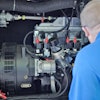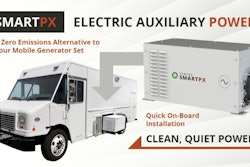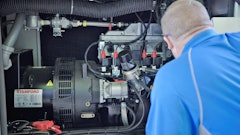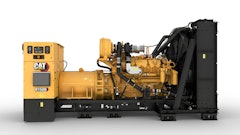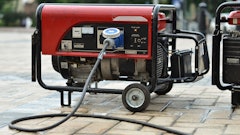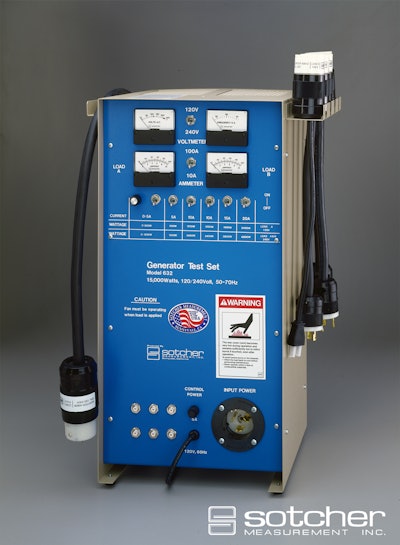
One of the most important parts of successful power rentals is matching the generator to your customer's needs. A simple way to estimate the correct generator size is to consider the type of load the customer is applying. If it's just lighting then you can simply total up the wattage of the lamps to be operated add a small safety factor and that is the generator size required. If the customer is applying a mixed load of hand tools, then a safety factor of two times the estimated load is appropriate. On the other hand, if the customer is planning to operate machines that will be fully loaded, then a safety factor of three times the rated wattage should be considered to allow for the start up current required, as various machines are turned off and on.
What tests and inspections should be performed on a generator as it is returned from rental?
First the generator should be given a visual inspection:
- Are there any loose, damaged or missing parts?
- Are the safety labels in place and easy to read?
- Is the fuel tank full?
- Is the fuel tank valve shut off?
- Is the oil level up to the full mark?
- Are all safety guards in place?
Next the generator should be tested:
- Perform a manual test of each ground fault circuit interrupter (GFCI).
- Apply a load equal to at least 2/3 the generator’s capacity.
- Verify that the output voltage and frequency is within specifications under no load and full load.
- Test the ground bonding from the receptacle’s ground pin to the frame of the generator.
Why not just check the output voltage with a voltmeter?
Sure you can do it that way, but it’s like trying to judge a car's performance by just racing the engine on the side of the road. If you want to provide your customers with quality products they can depend on, you need to inspect them, test them and document the results.
What are the rules?
Grounding refers to the connection of an electrical circuit or equipment to a reference ground, such as the generator’s frame or a ground rod. Bonding is the intentional connection between the neutral wire and the grounding means of the generator, which includes the frame of the generator. The term bonding is also used to describe the intentional electrical connection of components such as the gas tank or engine to the frame of the generator. Keep in mind OSHA has two specifications, one dealing with grounding the generator and the other with bonding the neutral to the frame.
In accordance with OSHA, portable generators used on construction sites do not need to be connected to a ground rod, provided the generator supplies only equipment connected through receptacles on the generator, and the equipment is grounding through the receptacles to the frame of the generator.
Note the generator’s noncurrent-carrying metal parts such as the fuel tank, the internal combustion engine and the generator’s housing must also be bonded to the frame.
Generators used on construction sites supplying cord-and-plug connected equipment (tools, lights, etc.) are considered a “separately derived system” in the National Electrical Code and thus the neutral must be bonded to the frame of the generator.
What's the best way to test for proper grounding or bonding?
For operator safety the grounding and bonding circuits must provide a low resistance connection and must be capable of conducting a surge of electrical current.
Sotcher offers a Ground/Neutral Continuity Tester for portable generators. It tests the integrity of the ground and neutral connections from each of the receptacles to the frame of the generator. The test is conducted at a full 10 amperes of current and tests for a resistance of 0.2 ohms or less. A panel-mounted meter monitors the current flow. Adapters are offered to match all standard receptacles.
Why not just use an ohmmeter? An ohmmeter will indicate if there is an electrical connection, but it cannot tell you if the connection is a single strand of wire or a solid connection. Remember, you are depending on the bonding connection to conduct a surge of current if a short circuit should occur.
What is wet stacking?
Diesel-driven units are subject to particular malady known as "wet stacking" or "slobbering," which stems from operation under no-load or light-load conditions. Such operations cause fuel deposits to collect on the combustion chamber, injector nozzles, piston rings, turbo-charger and exhaust system. The result is diminished engine output capacity. Fully loading the generator for a time period will clear this condition.
Remember, the future of your company depends on the quality of the service you provide your customers.

